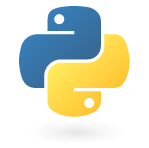Introduction to PyQt5
last modified October 18, 2023
This is an introductory PyQt5 tutorial. The purpose of this tutorial is to get you started with the PyQt5 toolkit. The tutorial has been created and tested on Linux. PyQt4 tutorial covers PyQt4, which is a blending of the Python language (2.x and 3.x) to the Qt4 library.
About PyQt5
PyQt5 is a set of Python bindings for Qt5 application framework from Digia. Qt library is one of the most powerful GUI libraries. The official home site for PyQt5 is www.riverbankcomputing.co.uk/news. PyQt5 is developed by Riverbank Computing.
PyQt5 is implemented as a set of Python modules. It has over 620 classes and 6000 functions and methods. It is a multiplatform toolkit which runs on all major operating systems, including Unix, Windows, and Mac OS. PyQt5 is dual licensed. Developers can choose between a GPL and a commercial license.
PyQt5 installation
$ sudo pip3 install pyqt5
We can install PyQt5 with the pip3 tool.
PyQt5 modules
PyQt5's classes are divided into several modules, including the following:
- QtCore
- QtGui
- QtWidgets
- QtMultimedia
- QtBluetooth
- QtNetwork
- QtPositioning
- Enginio
- QtWebSockets
- QtWebEngine
- QtWebEngineCore
- QtWebEngineWidgets
- QtXml
- QtSvg
- QtSql
- QtTest
The QtCore module contains the core non-GUI functionality. This
module is used for working with time, files and directories, various data
types, streams, URLs, mime types, threads or processes.
The QtGui contains classes for windowing system integration, event handling,
2D graphics, basic imaging, fonts and text. The QtWidgets module contains classes
that provide a set of UI elements to create classic desktop-style user interfaces.
The QtMultimedia contains classes to handle multimedia content and APIs to
access camera and radio functionality.
The QtBluetooth module contains classes to scan for devices and connect and interact with them.
The QtNetwork module contains the classes for
network programming. These classes facilitate the coding of TCP/IP and UDP clients and
servers by making the network programming easier and more portable.
The QtPositioning contains classes to determine a position by using a variety
of possible sources, including satellite, Wi-Fi, or a text file.
The Enginio module implements the client-side library for accessing the Qt
Cloud Services Managed Application Runtime.
The QtWebSockets module contains classes that implement the
WebSocket protocol.
The QtWebEngine module provides lasses for integrating QML Web Engine objects with Python
The QtWebEngineCore contains the core Web Engine classes. The QtWebEngineWidgets
contains the Chromium based web browser.
The QtXml contains classes for working with XML files. This module
provides implementation for both SAX and DOM APIs.
The QtSvg module provides classes for displaying the contents of
SVG files. Scalable Vector Graphics (SVG) is a language for describing
two-dimensional graphics and graphical applications in XML.
The QtSql module provides classes for working with databases.
The QtTest contains functions that enable unit testing of PyQt5 applications.
Python
 Python is a general-purpose, dynamic, object-oriented programming language.
The design purpose of the Python language emphasizes programmer productivity
and code readability. Python was initially developed by Guido van Rossum.
It was first released in 1991. Python was inspired by ABC, Haskell, Java, Lisp, Icon,
and Perl programming languages. Python is a high-level, general purpose,
multiplatform, interpreted language.
Python is a minimalistic language. One of its most visible features is that it does
not use semicolons nor brackets. It uses indentation instead.
Python is maintained by a large group of volunteers worldwide.
Python is open source software. Python is an ideal start for those who want
to learn programming.
Python is a general-purpose, dynamic, object-oriented programming language.
The design purpose of the Python language emphasizes programmer productivity
and code readability. Python was initially developed by Guido van Rossum.
It was first released in 1991. Python was inspired by ABC, Haskell, Java, Lisp, Icon,
and Perl programming languages. Python is a high-level, general purpose,
multiplatform, interpreted language.
Python is a minimalistic language. One of its most visible features is that it does
not use semicolons nor brackets. It uses indentation instead.
Python is maintained by a large group of volunteers worldwide.
Python is open source software. Python is an ideal start for those who want
to learn programming.
Python programming language supports several programming styles. It does not force a programmer to a specific paradigm. Python supports object-oriented and procedural programming. There is also a limited support for functional programming.
The official web site for the Python programming language is python.org
Perl, Python, and Ruby are widely used scripting languages. They share many similarities and they are close competitors.
PyQt5 version
There are strings which hold the version of Qt and PyQt5.
#!/usr/bin/python from PyQt5.QtCore import QT_VERSION_STR from PyQt5.Qt import PYQT_VERSION_STR print(QT_VERSION_STR) print(PYQT_VERSION_STR)
We print the version of Qt library and PyQt5 module.
$ ./pyqt_version.py 5.14.2 5.15.0
This is a sample output.
This chapter was an introduction to PyQt5 toolkit.